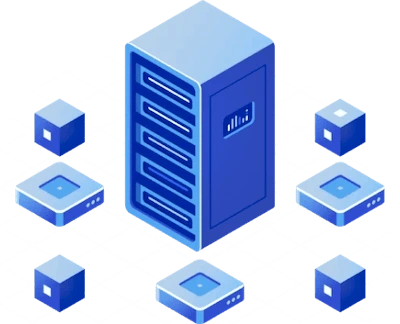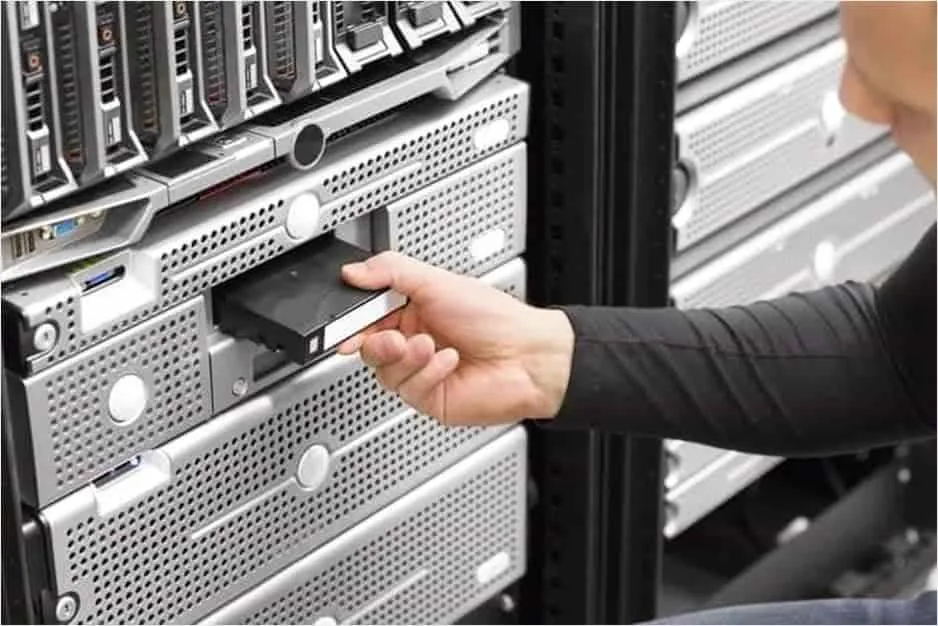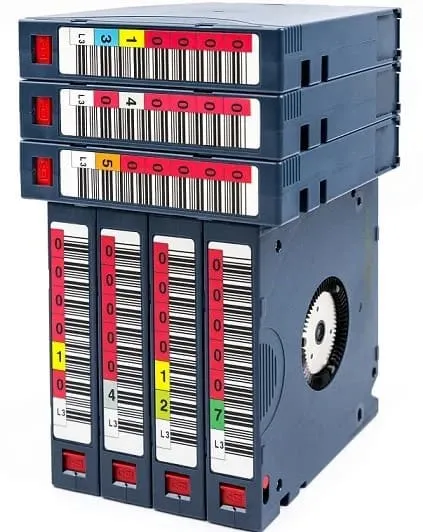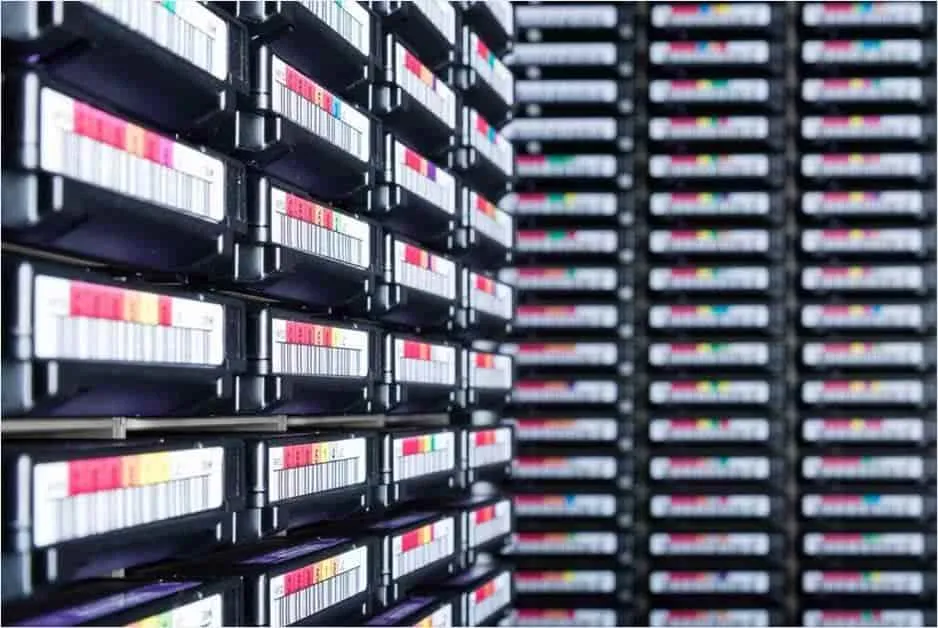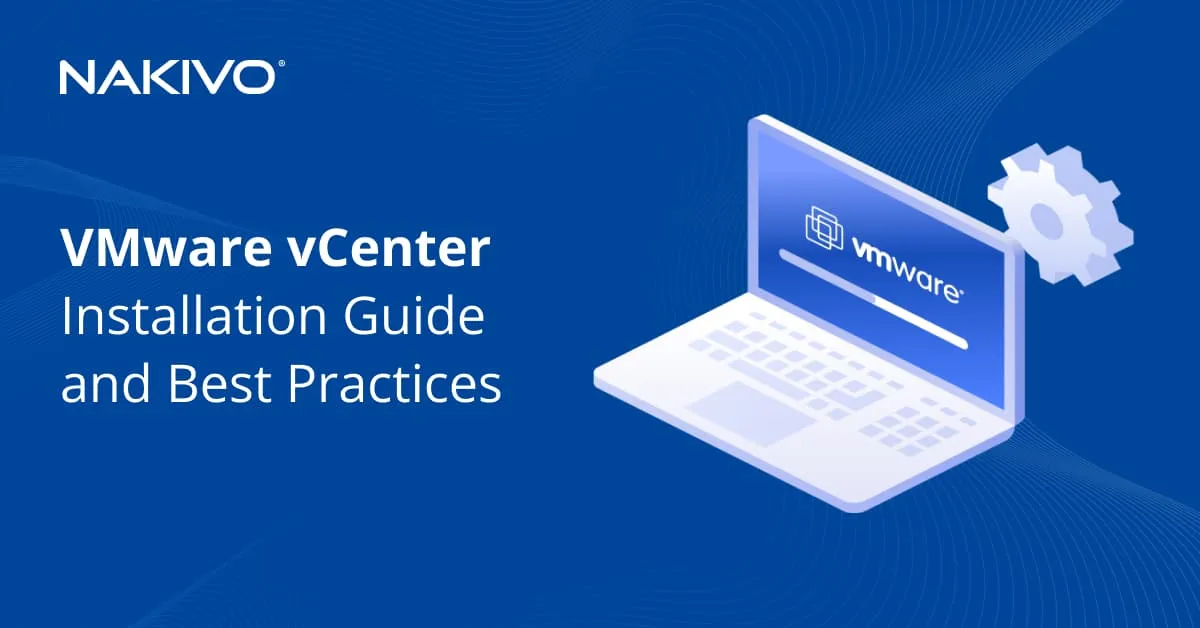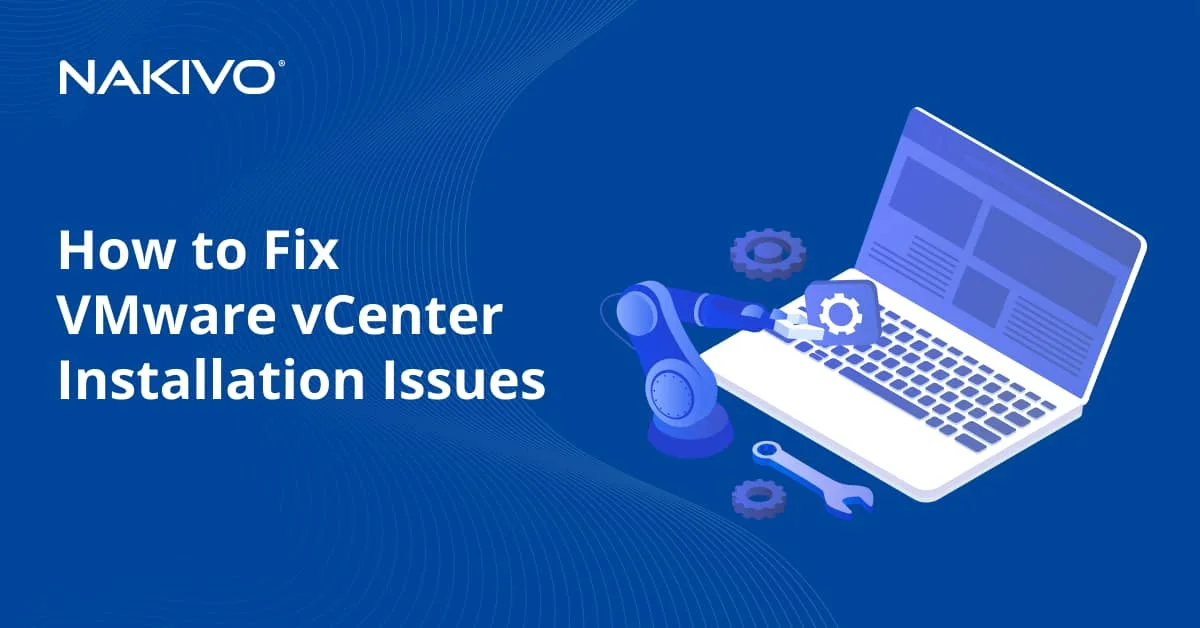Magnetic Tape Backup in 2023: Full Overview
Tape has been in use as a primary storage medium since the 1960s. Over time, tape drives have been overshadowed by disk and cloud storage with the growing demands of data-driven businesses and the emergence of new technologies. This has led some to predict that these technologies would eventually completely replace tape. Other popular misconceptions about tape and backup to tape include poor performance, low capacity, and lack of scalability. Such falsehoods have negatively affected tape’s reputation as a reliable backup medium.
We will cover the most common tape backup myths and attempts to debunk them. Moreover, we focus on the state of tape as a backup medium in 2023 and where the backup to tape technology is heading.
What Is Tape Backup?
Tape backup is a data protection approach that involves storing digital data copies of primary data on tape cartridges or cassettes. Tape backups are currently used as secondary backups for long-term offsite storage of critical data that doesn’t need to be accessed on a regular basis. They are especially useful for archival and data compliance purposes.
The role of tape today
Tape was the primary way of storing digital data from the 1960s through the mid-1980s – up to the point when hard disks became more widespread. By that time, hard disks offered a lower price, higher capacity, and better usability than magnetic tapes. These characteristics made hard drives an effective alternative to tape backups. Nevertheless, tape drive backup still remains one of the main options for storing data due to its large storage capacity, cost-effectiveness, and reliability.
However, magnetic tape has its disadvantages. For example, for the purpose of reading or writing digital data onto a tape, you should use a tape drive. Note that tape drives are sequential-access devices, meaning that in order to access a specific data block, you first need to read all the preceding data blocks. Also, tape cartridges and cassettes can deteriorate over time if kept in unfavorable conditions, resulting in unwanted data loss.
Magnetic tape formats
To compete with disk-based or cloud-based storage, manufacturers of magnetic tape backup systems have to constantly develop and enrich tape functionality. There are multiple tape formats on the market. They vary in capacity, data transfer speed, load time, etc.
These are the five main tape formats that you should know about:
- LTO (Linear Tape Open) is an open-format tape storage technology that is compatible with various storage media products. LTO is one of the most commonly used tape formats due to its high native storage capacity (up to 12 TB) and large compressed capacity (up to 30 TB).
- DLT (Digital Linear Tape) is another popular tape format on which data is written in 128 or 208 linear tracks. DLT cartridges support up to 70 GB of compressed storage capacity, while a new DLT version, SuperDLT, can ensure storage capacity of up to 300 GB.
- DAT (Digital Audio Tape) is a storage medium that was initially designed for audio use but has since become a popular backup medium. This tape format has a storage capacity of 1 to 80 GB on a 60- to 180-meter tape.
- AIT (Advanced Intelligent Tape) is a tape format developed by Sony for computer data archiving and storage. AIT tapes of generation 5 can store up to 400 GB of information and ensure a data transfer rate of 24 MBps.
- QIC (Quarter Inch Cartridge) is a magnetic tape storage format, which provides a native storage capacity of 60 MB to 25 GB. QIC tapes are mostly used for backing up personal computers.
Common Tape Backup Myths
Below, we demonstrate how tape is still an efficient, cost-saving storage option even in 2023, debunking all the myths surrounding backup to tape.
Myth 1: Tape is dead.
If you have Googled ‘tape backup’, you might have noticed that most articles only focus on whether tape is, in fact, dead or not. This is odd considering that tape is still widely used in modern data centers for storing large amounts of data.
Tape backup is not actually dead – it is not properly marketed. Unfortunately, some business owners, IT administrators, and industry experts do not fully understand all the benefits that come with using tape.
The main reason for this is the lack of understanding of how magnetic tape backup actually works and how it can enhance your IT data protection infrastructure. Customers simply lack information about the newest tape features and capabilities.
Vendors of tape backup systems need to work hard on debunking falsehoods surrounding tape technology and better advertise the merits of their products. Otherwise, the myth about the demise of tape will persist.
Myth 2: Tape backup is outdated.
The role of tape in the modern IT infrastructure has drastically changed over time. While previously used as the primary storage option, tape is now the best option for offsite archiving of large amounts of data. When tape backup is used alongside other backup technology (disk or cloud), you can build a comprehensive data protection strategy addressing your system’s faults and vulnerabilities.
Another point worth mentioning is that tape remains stable throughout its development. Unlike cloud and disk storage which experience rise and decline respectively, tape usage has been steady over the years. This is mainly due to the reliability, durability and backward compatibility that magnetic tape provides, especially LTO tape drives and cartridges.
Myth 3: Tape can be replaced by other storage media.
Despite the many benefits that disk or cloud storage can provide, they haven’t been able to fully replace tape as a backup medium. The main reason for this is that magnetic tape has some unique features which make it stand out:
- High capacity and longevity – perfect for the long-term retention of large files
- Portability and compact size – suitable for transporting data from one system to another
- Compliant storage for highly regulated industries where data integrity and security are essential
- Ransomware-resilient – ultimate offline (air-gapped) storage medium that is not connected to any network that might be exposed to malware or ransomware
- Efficient in terms of power consumption and heat production – allows for significant energy costs reduction
Myth 4: Tape is not an effective backup storage medium.
Tape cannot be considered the ultimate backup medium, but it is still the best option when it comes to ensuring long-term data retention and building offsite archival storage.
The 3-2-1 backup rule is a popular data protection strategy that can ensure the safety of your data under almost any circumstances. This rule works as follows: have three copies of data, store them on two types of media, and keep one of them offsite. You can improve this backup strategy by simply sending your backups to tape. This way, you will have one more copy that is air-gapped and offline, thus increasing resilience against ransomware attacks and adding another layer of data protection.
Tape’s offline capabilities make it an indispensable storage medium in the age of advanced cybersecurity threats. Keeping your data on tape allows you to build ransomware-proof storage for a fraction of the price. As a result, you can not only protect the most critical copies of your data, but also secure them from internal or external attackers.
Myth 5: Tape has no future.
Due to the false claims that tape is dead and outdated, the majority of customers still believe that the future of data storage is not in magnetic tape. In fact, this is not true as about 80% of modern businesses include tape in their backup infrastructure. Moreover, interest in the tape backup technology has greatly increased in recent years. As a result, vendors of tape backup systems are more determined than ever to increase the tape storage capabilities to meet growing business demands.
First and foremost, tape vendors are working on increasing tape storage capacity. Moreover, tape offers offline storage capabilities, ensuring that your backups are securely protected against ransomware attacks. Magnetic tape backup vendors take this functionality even further by including tape encryption. This way, an unauthorized user cannot access the tape content and overwrite your data.
One of the latest tape developments is the use of tape partitioning. With this functionality, you can divide tape into two partitions. One of these partitions can contain the tape’s index, whereas the other can be used to store backups. This way, you can reduce the complexity of tape backup management.
Magnetic Tape Backup Advantages and Disadvantages
Even though their popularity has fluctuated over the years, tapes remain relevant in modern data centers. The advantages of tape backup make it a very attractive backup storage option for organizations. Following the advantages, and for the sake of providing a full picture of this technology, we cover some of the disadvantages of backup to tape.
Advantages of tape backup
- Capacity. Tape devices can provide large storage capacity, which is constantly being increased to meet growing data demands. This high-capacity storage comes in a relatively small physical package.
- Cost. Compared to disk or cloud backups, tape backups are highly affordable when it comes to cost per gigabyte. Moreover, tape drives can be used as offline data storage, which brings costs down in terms of support and maintenance.
When it comes to large amounts of legacy data, tape backup is considered the most cost-efficient way of storing it. It is impractical to first convert legacy data into an appropriate modern format and then transfer it from the tape cartridge to a new medium. - Scalability. You can easily scale the tape backup infrastructure by buying new tape drives and adding them to the tape library. On the other hand, if you want to grow the capacity of disk-based storage, you will have to buy additional hardware, which can be quite expensive.
- Longevity. The longevity of tapes is the main reason why tape backups are still widely used by large enterprises. If maintained properly, tape drives can store required data for 30 years or more. As a result, tape backups are used for long-term retention of critical data and provide high archival stability.
- Efficiency. Disk or cloud storage devices are normally used for storing data that needs to be accessed frequently and rapidly. Therefore, such devices need to operate on a 24/7 basis so as to perform regular data backups and ensure successful recovery if needed. Due to this, disk storage is considered one of the primary sources of energy consumption in modern data centers.
On the other hand, tape backup storage is primarily used for data archiving due to its capability to store data offline. Tape drives operate only when data is being read or written to them. Thus, tape drives run on an as-needed basis, meaning that they consume less power and generate less heat than disk storage devices. - Portability. After writing data to tape cartridges, you can simply pick them up and transport these tape backup units to an offsite location. In case of any potential threat to your tape storage facility, you can easily collect tape cartridge backups and transport them to a more secure location. To secure data from cloud or disk storage spaces, you will have to transfer large amounts of data over the network to a new backup location. Such operations are time consuming and can disrupt core production operations.
- Security. What makes tape backup a lucrative option for many organizations is that it can protect data against ransomware or malware. Tape backups are stored offline, meaning that the tape storage device gets disconnected from the system once the backup operation is complete. Thus, with the tape cartridge not connected to the system, you have an “air-gapped backup” and attackers cannot get hold of data and corrupt it.
In addition to encryption options, tape cartridges can be WORM-capable, that is, once data is written, you can rewrite them. All these options increase tape security and data compliance and prevent encryption/corruption by malware.
Disadvantages of tape backup
- The high price for tape drives and tape libraries. Tape backup systems require you to use a tape backup drive, whose price is high or a tape library whose price is even higher (unlike the price for affordable tape cartridges).
- Random access to the recorded data is not supported with only sequential access available. As a result, you need a long time to find the needed file or directory on a tape medium (the tape must be rewound when seeking data) when performing recovery.
- Tape cartridges are sensitive to magnetic fields unlike hard disk drives.
- Low data copying speed. Slow read/write speed compared to hard disk drives. Restoring data from a tape storage backup can take a long time.
Backup Tape Storage Best Practices
Magnetic tape backup best practices commonly cover the following areas: care and handling of magnetic tapes, storage environment, magnetic tape backup inventory, backup strategy, and the role of employees. Even though some tape cartridges can last up to thirty years, their state may significantly deteriorate without proper care and maintenance. If a tape gets damaged, you will not be able to retrieve the data it contains. Let’s see which magnetic tape backup best practices are worth being implemented:
- Keep a copy of tape backup offsite as well as one onsite. The standard practice is to back up data to tape medium and then send that tape cartridge offsite for long-term storage. However, it is recommended that you also keep a copy of all that data onsite. Keeping an onsite copy ensures that you can quickly resume business operations without experiencing significant downtime or service disruption. Onsite data backups are used for immediate recovery, while offsite tape backups can help with data restoration in case your production center has been destroyed in a disaster.
- Consider the optimal tape storage backup location. As mentioned above, magnetic tape backups are normally kept offsite. Thus, you should consider which location is the best for storing magnetic tape backups. Choose a different geographic area away from the production center for offsite storage to minimize the risk of being affected by the same disaster. However, the main criterion for choosing an offsite location is your business needs, which dictate your recovery objectives. Thus, tapes should be located at a safe distance from the main production site to ensure reliable data retention and timely recovery.
- Read magnetic tape storage regulations. Control the environment in which tape cartridges are stored. Make sure that the storage environment is not exposed to heat, humidity, dust, direct sunlight, etc. Your data storage environment should be secure, climate-controlled, and fireproof to minimize tape wear. Ensure that tapes are stored away from printers and copiers, which are likely to produce paper dust and toner dust. Moreover, keep tapes away from high-traffic facilities like stairways, hallways, entrances, or exits, which can get contaminated fast. Avoid storing backup tapes near magnetic fields and devices which can produce strong magnetic fields.
- Keep tapes clean. Tapes require regular cleaning to prevent dust, dirt, and fibers from contaminating the tape and affecting the integrity of the backed up data. Tape cartridges can only be cleaned a limited number of times. Too much cleaning can lead to tape degradation and affect the integrity of your data. Record every cleaning procedure into your inventory journal to be aware of the time when the cartridge is about to expire.
- Keep an inventory of all offsite tape cartridges. Keep a record of all available tapes by putting critical information (for example, the tape model, the date when the backup was conducted, the category of stored data, etc.) on the tape label. You can label each tape cartridge to make them distinguishable from one another and know where the required information is stored. Having an inventory list can save you a lot of time during an actual disaster recovery event.
- Test recoverability of magnetic tape backups. Run a regular test restore to verify the integrity of tape backup content and check how effective your backup activities are. Periodic backup testing can help identify inconsistencies beforehand and avoid any issues in the future.
- Choose the backup strategy most compatible with your business needs. Backup frequency, backup schedule, backup rotation scheme, backup retention strategy should be considered when it comes to creating a comprehensive backup strategy. This way, you can ensure not only data protection but also prevent premature wear and damage of tape drives.
- Install antivirus software. Regularly scan your production environment in order to verify that it is free from viruses and your system is securely protected. A reliable antivirus can help identify and remove any malware from your system and prevent it from attacking your system and corrupting your data and tape backups.
- Carefully eject backup tapes once the backup operation is complete. Use the tape cartridge specified for your type of tape device. Don’t forget to remove the tape cartridge from the drive if the drive is not in use. Remember to put tape cartridges back in their protective cases.
- Control employee access to tape backups. Ensure that only trusted employees can have access to tape storage. Designate at least two employees who are responsible for monitoring your magnetic tape backup and recovery operations.
Conclusion
As you can see, the tape is still relevant in today’s digitized world despite multiple claims of its inevitable demise. The tape has not ceased to exist for a number of reasons: unique features and capabilities, continuous development, and time-proven performance.
NAKIVO Backup & Replication recognizes the importance of tape backup for modern data centers. The NAKIVO solution includes native backup to tape functionality. With this feature, you can copy both full and incremental backups to tape for long-term retention. To further increase your data protection performance and save time, the NAKIVO solution can fully automate the backup to tape process.
However, when it comes to developing a comprehensive data protection strategy, you should not be concerned with selecting one backup medium over another. Each backup technology provides specific benefits. Thus, disk, cloud, and tape work best when used together. NAKIVO Backup & Replication is a full-fledged data protection solution that can deliver backup, replication, and recovery services across platforms and to multiple destinations.

